
The Legacy of Liberation
Events in Normandy
On the night of 5 June 1944, soldiers were aboard ships and landing craft heading for the beaches of France, or preparing to board aircraft that would drop them into enemy territory. Airmen and their crew were fuelling and arming their aircraft, ready to join battle in the skies over Normandy. Sailors had been at work for days, organising the largest invasion flotilla the world had ever seen.
For many, this would be their last evening. For others, it marked the beginning of a battle that many would not return from.
Join us as we pay tribute to those who did not survive D-Day and the Battle of Normandy.
Find out more about our upcoming events below, and register for tickets.
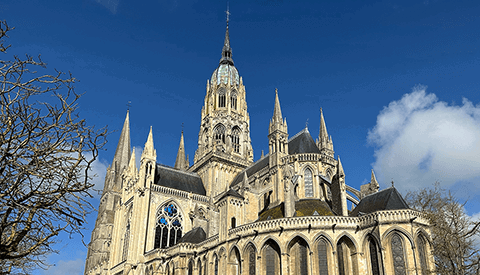
Service of Thanksgiving
Bayeux Cathedral - 5 June
Regrettably, due to the overwhelming response, registration has now closed for this event. The Service will be broadcast live on KTO TV and if you are visiting or live in Bayeux, you will be able to watch live on the large screen in front of the Town Hall. If you have not already done so, and would like to join us, please register for our Service of Remembrance at Bayeux War Cemetery.
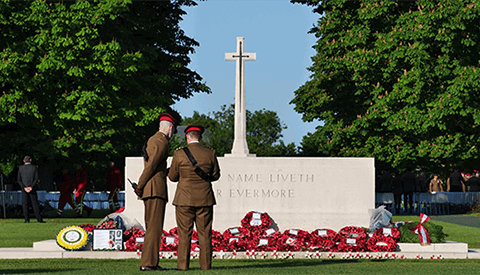
D-Day remembrance service
Bayeux War Cemetery - 6 June
Attend our memorial service at Bayeux War Cemetery on the morning of 6 June, marking the 80th anniversary of D-Day and the start of the invasion of Normandy.
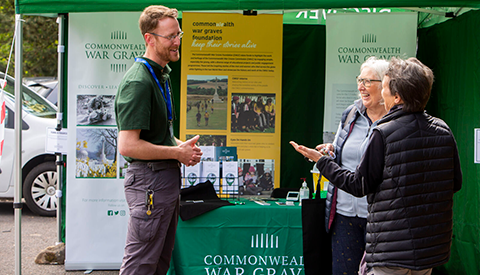
LIGHTING THEIR Legacy
13 May onwards
Follow our ceremonial torch to a series of events across Normandy and the UK. Join us to discover more about our work and the stories of the fallen of D-Day.
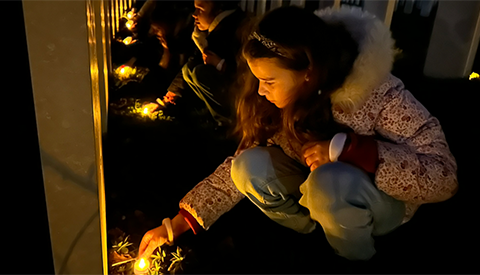
GREAT VIGIL
Normandy - 5 June
Join our vigil in our sites across Normandy where we will pay tribute to those who died on D-Day and in the invasion of Normandy by illuminating more than 25,000 headstones.
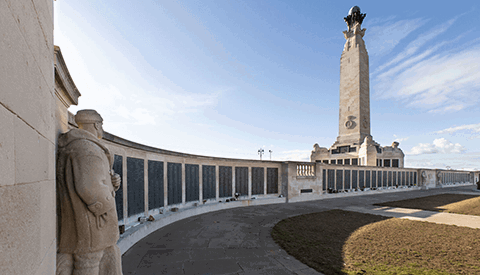
Events in Portsmouth
Portsmouth - 5 June
Visit us in Portsmouth where we will be participating in the national event along with the British Armed Forces. Come and find out about the work we do and how you can get involved.
![]()
Share your WW2 stories
or discover stories on For Evermore
Discover the stories of the men and women we commemorate in our stories archive, or submit a story of your own.

Sign up to our Liberation mailing list to be the first to find out more about our events ahead of the 80th anniversary of D-Day.
Join our mailing listOur Liberation mailing list
Sign up to get news and updates about our events across the UK and Normandy ahead of the 80th anniversary.
REMEMBERING HISTORIC NORMANDY EVENTS - D-DAY AND THE BATTLE OF NORMANDY
Officially Operation Overlord, but known by most as D-Day, the landings in Normandy on June 6 1944 remain one of the most well-known and talked about events of World War II.
The commanders of the Allied forces knew that opening a second front in Europe was vital in ending the war. France was the obvious invasion site, and five beaches on the Normandy coastline were targeted.
Utah beach was the most westerly target, allowing the Allies to move towards the port of Cherbourg, a vital early objective for the operations. Utah was primarily an American landing zone and was supported by the 82nd and 101st Airborne Division parachute landings inland, near Carentan.
Omaha beach was the next beach along the coastline, linking the American landings at Utah beach with the British and Canadian landing zones to the east. Included in the landings were the newly formed 2nd and 5th Ranger Battalions who were tasked with scaling the sheer cliff faces of the Pointe-du-Hoc promontory, a German strong point that had the potential to cause severe damage to the incoming invasion. Omaha was also one of the sites earmarked for a Mulberry Harbour - a temporary, floating harbour that would be used to unload vital supplies directly on to the beaches until a proper harbour could be found.
Gold beach was the centre of the invasion area, located between Port-en-Bessin and Vur-ser-Mer. The British forces that landed here were tasked with securing a beachhead before capturing Arromanches and then Bayeux. Another Mulberry harbour was constructed at Arromanches, the remnants of which can still be seen on the beaches today.
Juno beach, to the east of Gold, was predominantly the responsibility of the Canadian forces. The landing zone ran from Courseulles-sur-mer to Saint-Aubin-sur-mer, with the initial attack designed to create a beachhead and capture vital transport links near Carpiquet, including its airfield and Caey-Bayeux railway line.
Sword beach was the most easterly of the D-Day beaches, stretching between Ouistreham and Saint-Aubin-sur-Mer. Sword was the responsibility of the British 3rd Division, tasked with linking with the Canadian forces from Juno and advancing on, and capturing, Caen. At the same time, men of the 6th Airborne Division would attack via parachute and glider, focussing on important bridges across the River Orne and Caen canal - allowing troops landing on Sword beach a route into the French mainland.
All of these landings were supported by incredible amounts of determination, organisation and bravery from Allied naval and air forces. Thousands of ships and landing craft were used to ferry men and equipment across the channel, repeatedly sailing into danger to deliver their cargo to the beaches. Above them, Allied aircrew flew nearly 15,000 sorties, attacking vital targets and ensuring complete air superiority in the skies above Normandy.
Despite the planning and preparation in the weeks and months leading up to the invasion, losses were heavy on the first day and throughout the rest of the Normandy campaign. Today we commemorate more than 22,000 Commonwealth casualties of D-Day in war graves across Normandy and on our memorials in France.
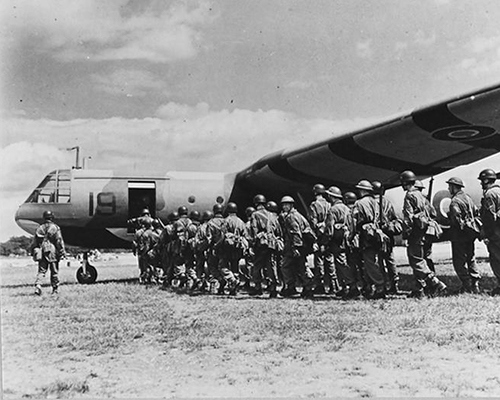
Discover the stories of D-Day
Piloting a Horsa glider was an incredibly dangerous task. Heavily loaded and difficult to manoeuvre, gliders were a one-way ticket - and even a successful landing meant that the pilot would be stuck behind enemy lines. Discover the story of Lieutenant John Lee Bromley of the 1st Wing, Glider Pilot Regiment, killed on 6 June 1944.
Image: IWM CH 10207

